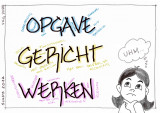City of Amsterdam

Activity
- 159Updates
- 0Thumbs up
- 38Comments
Kim Nathalia,
EU-project secretaris
at City of Amsterdam,
posted
Vania Stonner,
Teamleider Ruimte & Duurzaamheid Centrum
at City of Amsterdam,
posted
Maarten Sukel,
AI Lead
at City of Amsterdam,
posted
Maarten Sukel,
AI Lead
at City of Amsterdam,
posted
Edwin Oppedijk,
Communication | Media Relations
at City of Amsterdam,
posted
Edwin Oppedijk,
Communication | Media Relations
at City of Amsterdam,
posted
Maarten Sukel,
AI Lead
at City of Amsterdam,
posted
Dimitri Bak,
Strategic Communication Advisor
at City of Amsterdam,
posted











